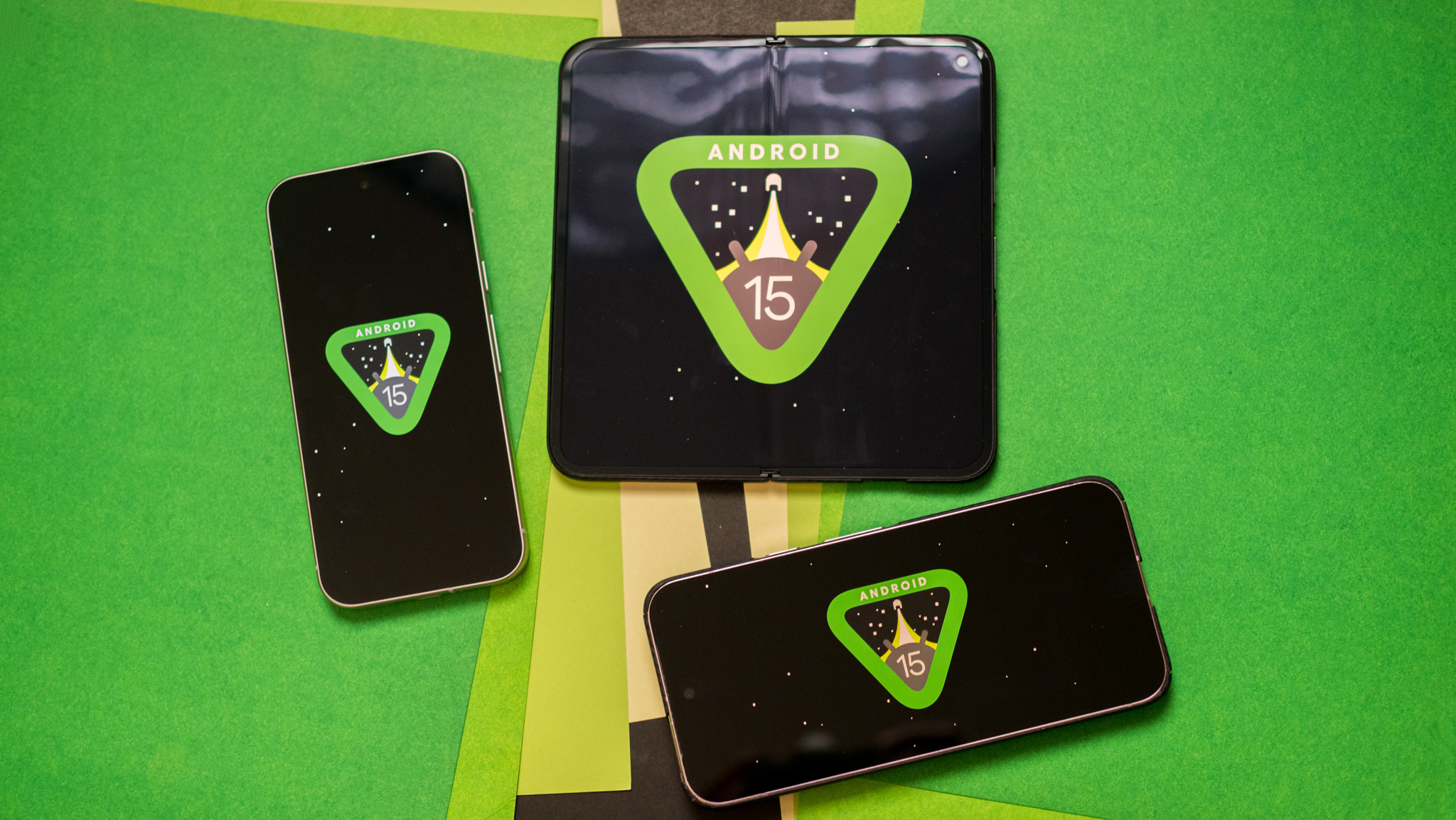Angry Birds Journey impressions: Angering birds, angering me
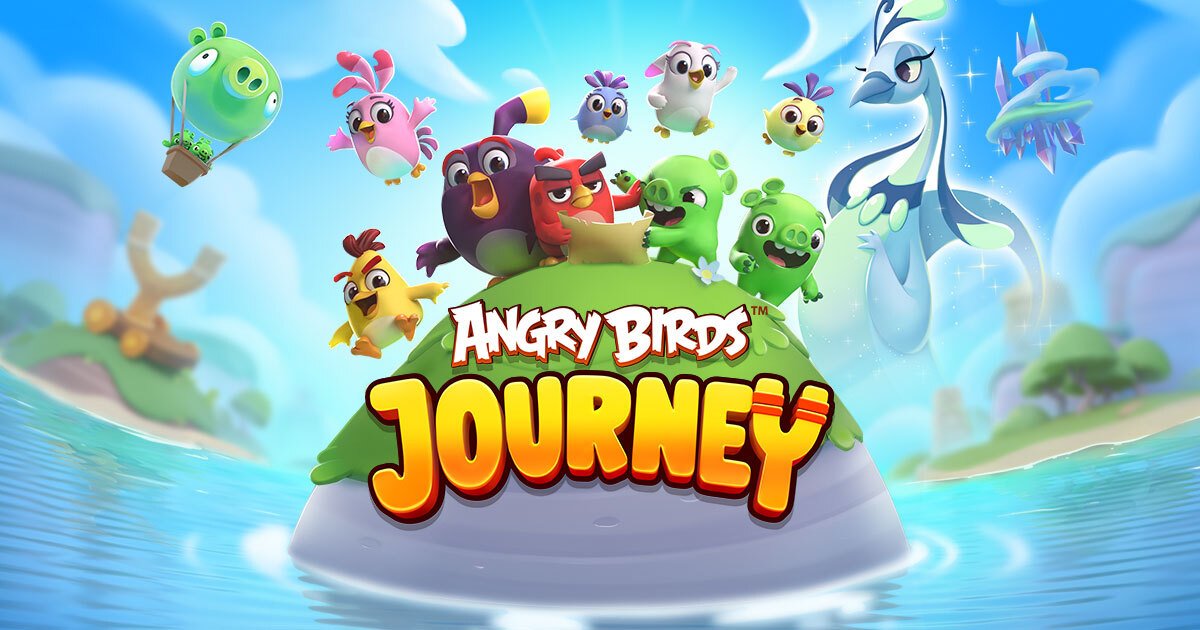
As a kid, I remember Angry Birds' infamous Mighty Eagle microtransaction was a bragging right on the playground because it almost always guaranteed a perfect score on each level. Players could pay a small fee to summon this powerful bird, which flew faster and hit harder than any other bird in the game before bombing the level with sardines, essentially wiping it clean. It was a welcome crutch for relatively inexperienced players faced with a tricky level.
The Mighty Eagle set a precedent for a lot of mobile games, but never invaded a player's experience. If my classmates and I were playing Angry Birds Journey, the new mobile title that came out last week, however, I'm pretty sure microtransactions worse than the Mighty Eagle would have prevented us from playing much beyond the first handful of levels.
The mobile game market has evolved since the first Angry Birds game. Microtransactions have become increasingly prominent in games to justify being free-to-play. Some titles have found the balance between having microtransactions available to buy and still allowing people to play for free, while others have not. Ignoring the predatory nature of a lot of games, most prominent free-to-play mobile games like Genshin Impact and Fortnite can be enjoyed without spending a dime. I would argue that most previous Angry Birds games would fit among them as well, some even being among the best Android games.
Angry Birds Journey, unfortunately, falls into step with games like Candy Crush with in-game currencies, pay-to-win mechanics, and even time limits on how long you can play before paying for extra game time. This all makes the experience of playing Angry Birds Journey unnecessarily unpleasant.
Is there anything to like in Angry Birds Journey?
The good things about Angry Birds Journey could be said about nearly any game in the series. It's easy to pick up, and gives players some arcade-style, puzzle gameplay that helps you kill time. Flinging fowl is still incredibly fun and nailing that perfect shot is deeply satisfying.
Thankfully, the game understands that the Angry Birds core gameplay loop has been iterated on over and over again throughout 20 entries. Journey tries to accomodate that by focusing on solid level design, instead of trying to find a new mechanic or gimmick. Instead, it takes a greatest hits-style approach that brings back the best parts about any individual bird, block, or other miscellaneous mechanics.
To keep these returning mechanics feeling fresh, the game incorporates them one-by-one. Every 10 or so levels, players might unlock another bird to use or encounter a block that's made out of jelly. Like previous entries, these mechanics fold in on themselves, sometimes combining into a new type of challenge.
Be an expert in 5 minutes
Get the latest news from Android Central, your trusted companion in the world of Android
But that's where it ends
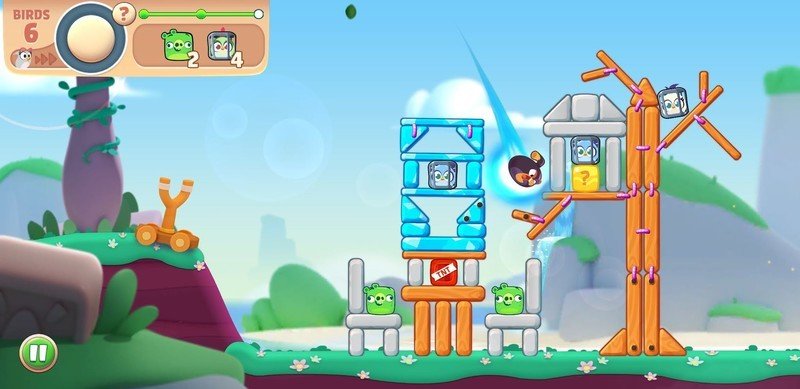
Unfortunately, Angry Birds Journey has abandoned the progression structure found in previous games. Here, players can make small in-game purchases to help beat a tough level. These purchases could summon a barrage of rubber ducks or cause flowers to grow out of the ground that threaten the structural integrity of the pigs' hideouts.
Angry Birds: Journey has abandoned the progression structure found in previous games.
These aren't unwelcome in games, so long as they're not required to complete a level or progress. It feels comparable to free-to-play multiplayer games monetizing cosmetics. Asking players to pay for things that aren't necessary isn't inherently a problem.
Pay-to-win mechanics aside, it tries to fix things that weren't broken. For example, previously players could access a sub-menu and select levels to replay. However, the game "solves" any need to go back and replay levels. Instead of chasing high scores with the previous 3-star rating system, the game gives players one star for completing each level.
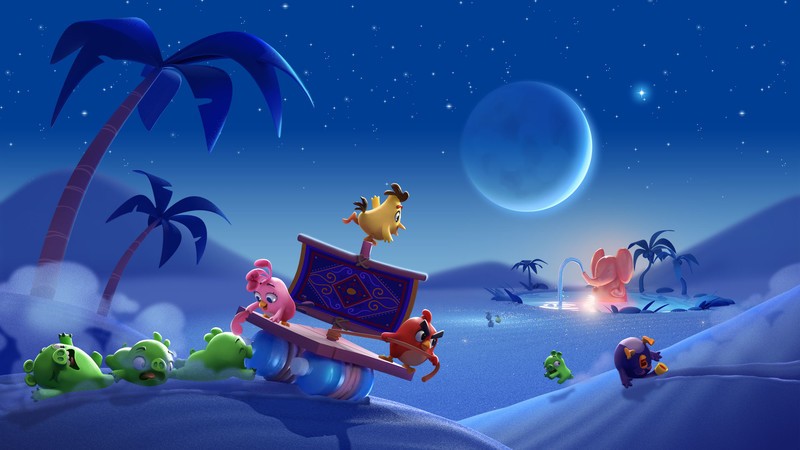
Completing levels also fills up three separate meters. One meter is filled up by completing levels and unlocks new story elements, in-game currency, and a few minutes of play time. What doesn't make sense about this specific meter is that it's the only way the game tells you that you're making any demonstrable progress from level-to-level. It's a clunky, solutionist alternative to just laying out each individual level one-by-one to display your progress. Beyond that, taking high-score mechanics out of a game designed to feel like an arcade game is a terrible mistake.
Where previous games rewarded and encouraged smart play with the star rating system to gauge how you might've done, Journey punishes you for playing poorly. If you fail enough times, you'll run out of playtime, meaning you'll either need to pay with in-game currency or buy more playtime with real money to continue.
The second meter isn't as confusing as it is frustrating. Filling it up also grants players a small amount of in-game currency and extra play time, but unlike the last one, this second meter fills up based on players' score in any given level. The problem with this is that there's no indication of your score anywhere in the game's UI at any point during or after a level, making this meter feel almost pointless. The last meter grants players a win streak bonus that allows for various in-game perks.
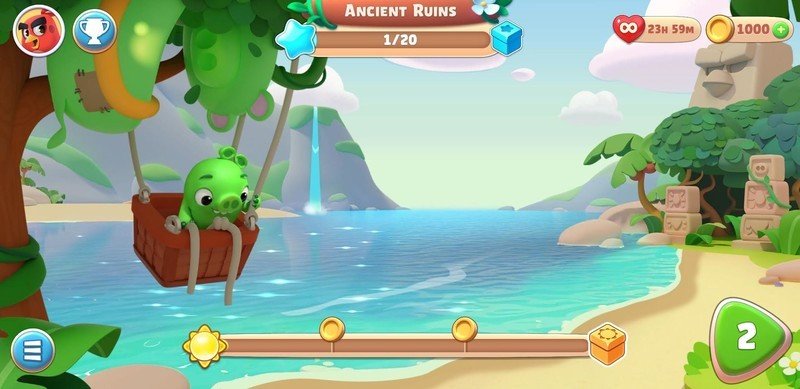
These meters try to mask the game's biggest flaws. Ultimately, their addition is akin to trying to mask a tattoo with makeup: something's clearly off if you stop to look.
The game's new meters are akin to trying to mask a tattoo with makeup: something's clearly off if you stop to look.
If players run out of play time, they're confronted with a choice to buy more with some in-game currency, which is unlockable in small amounts by playing the game or by spending real money. Failing to complete a level also presents players with an option to pay in-game currency or watch an ad for an extra chance to finish it.
These two mechanics are unpleasant, even at their best, when they do nothing more than inflate a false sense of difficulty that ends up frustrating more than they challenge in other games. They're not even close to that well-implemented in Journey.
The game's various meters mask the pay-or-watch-a-30-second-advertisement-to-play mechanics by putting enough in-game currency in front of you to make you think you'll never have to pay your way out of a sticky situation. Eventually, you're sure to lose a level with only a little playtime and not enough in-game credit to pay the game's arbitrary asking price to continue. If the insidious nature of the game's systems weren't glaring before, they will be then.
Angry Birds Journey is microtransactions gone bad
Drip-feeding extra playtime or in-game credit to mask the fact that Angry Birds: Journey expects you to shell out the cash feels disrespectful of its players. I'd call it creatively bankrupt if it weren't such a smart way to get between you and your money.
Even pay-to-win microtransactions, which aren't inherently offensive as long as they aren't required to finish a game, grow ugly. Challenging levels put you between a rock, a hard place, and a pit of lava. iI you don't want to pay for more playtime, you have to use a pay-to-win mechanic. If the pay-to-win mechanic somehow fails (which some did for me), you have to pay or watch an ad for another crack at the level before finally needing to pay for more playtime.
Popping piggies is still fun, but Angry Birds Journey leans on simplifying and homogenizing so much of the core experience only to turn around and overcomplicate it with unnecessary progression systems and barriers. It feels like a standout example of exactly how not to incorporate microtransactions in a game. I never had to spend a dime in the game and yet I still felt robbed.

Angry Birds Journey
If you want more Angry Birds action, check out Angry Birds Journey. It's the same gameplay you're used to... just with more microtransactions.

Charlie's a freelance contributor at Android Central from Milwaukee, WI.
